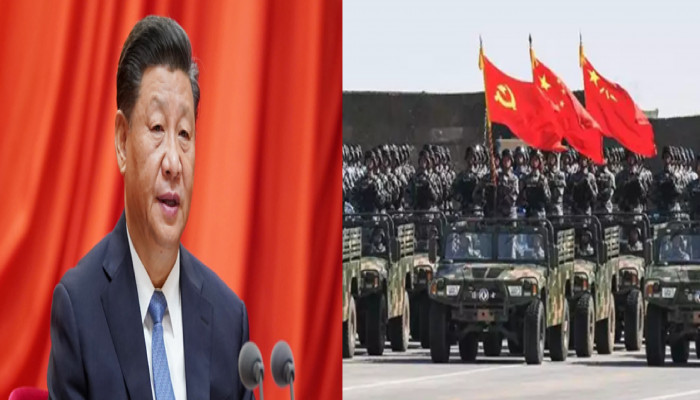Xi Jinping passes three rules of military code to transform China’s military
- In Reports
- 03:36 PM, Feb 22, 2025
- Myind Staff
On Friday, Chinese President Xi Jinping gave new instructions to update the rules for the country’s military, aiming to turn it into a world-class force. The focus is on improving combat readiness and preparing for potential wars, especially with the increasing competition with the US and rising tensions regarding Taiwan and neighbouring countries.
According to the state-run Xinhua news agency, Xi, who leads the military in addition to the strong ruling Communist Party of China (CPC) and the Presidency, signed directives to release three rules on the military's code of conduct, military formation, and interior order. The updated regulations emphasise combat readiness as the top priority, focusing on preparing for and engaging in warfare. By fully implementing the strategy of governing the armed forces through law, the revised rules aim to establish a more standardised approach to war preparation, training, operations, and daily activities. The changes to the military code of conduct also improve rules for recognising outstanding performance, disciplining violators and simplifying related procedures.
Since taking power in 2012, Xi Jinping has led a major anti-corruption campaign, punishing over 50 top military officials, including two defence ministers, for violations. As Chairman of the Central Military Commission (CMC), he holds supreme authority over the People’s Liberation Army (PLA), Navy, Air Force and several paramilitary forces. Newly revised military rules, set to take effect on April 1, aim to transform China’s armed forces into a world-class military. These updated regulations improve the management of soldiers by addressing aspects such as their appearance, behaviour, leave policies and training. Additionally, the revised rules on military formation provide detailed guidelines for conducting parades on land, at sea, in ports, and in the air.
China has introduced these new rules as it prepares for growing tensions with the US, especially with the return of President Donald Trump. Trump has promised a tough approach to limit China’s rise by imposing tariffs and strengthening the US military. Under President Xi Jinping, China has taken an aggressive stance on Taiwan, which it considers part of its territory. In recent years, it has conducted several large-scale military drills involving its navy, air force, missile forces, and army to assert its claims. China is also facing rising tensions in the South China Sea, where the Philippines, with US support, is standing firm on its territorial claims. China asserts ownership over most of the South China Sea, but Vietnam, the Philippines, Malaysia, Brunei, and Taiwan also claim parts of the region.
Additionally, China has a maritime dispute with Japan over the East China Sea, where its navy and coast guard frequently operate to reinforce its claim over the Senkaku Islands, which are currently controlled by Japan. Following the recent thaw in ties that had been locked for more than four years due to the military stalemate in Eastern Ladakh, China's relations with India were progressively returning to normal.







Comments